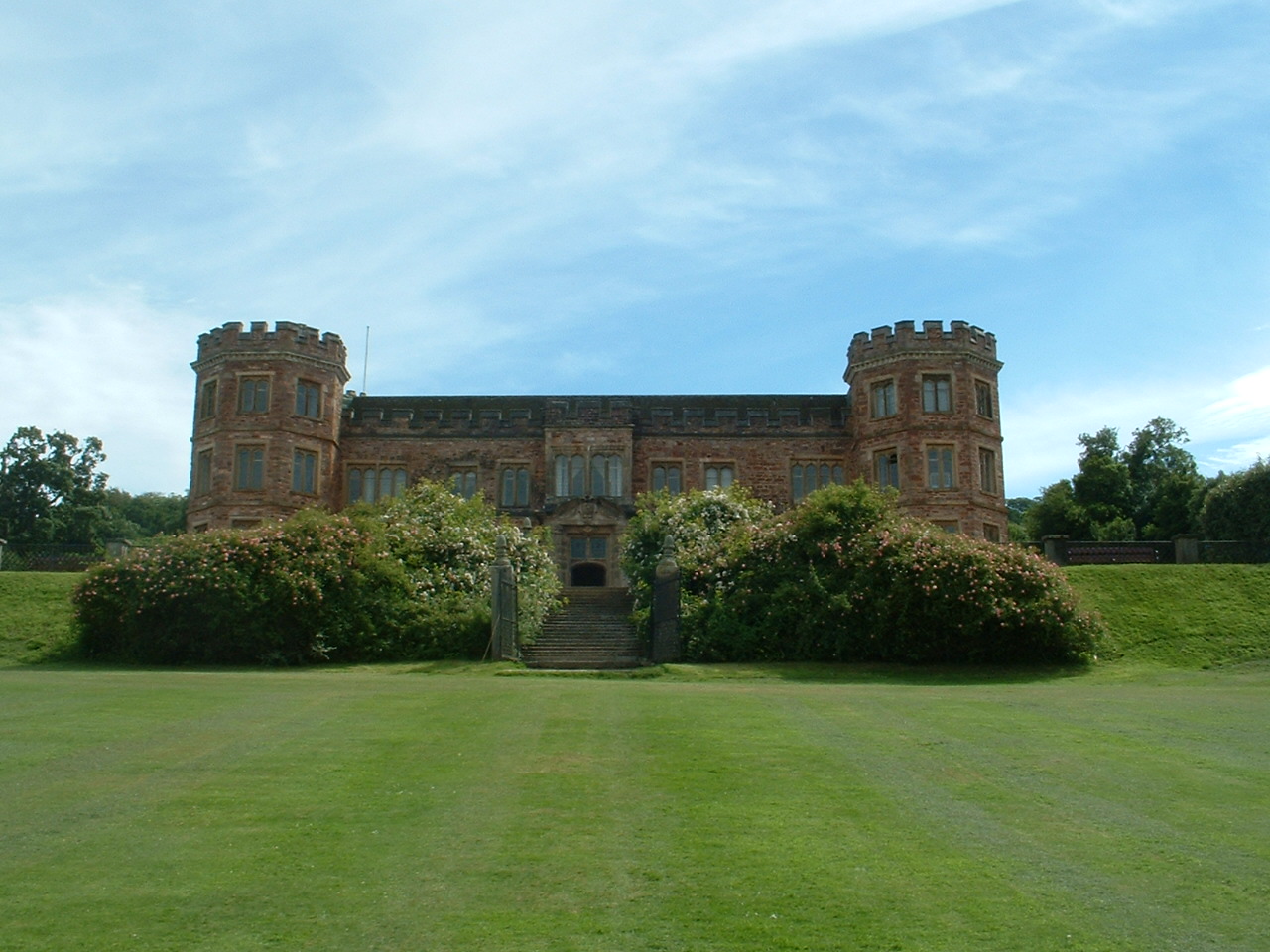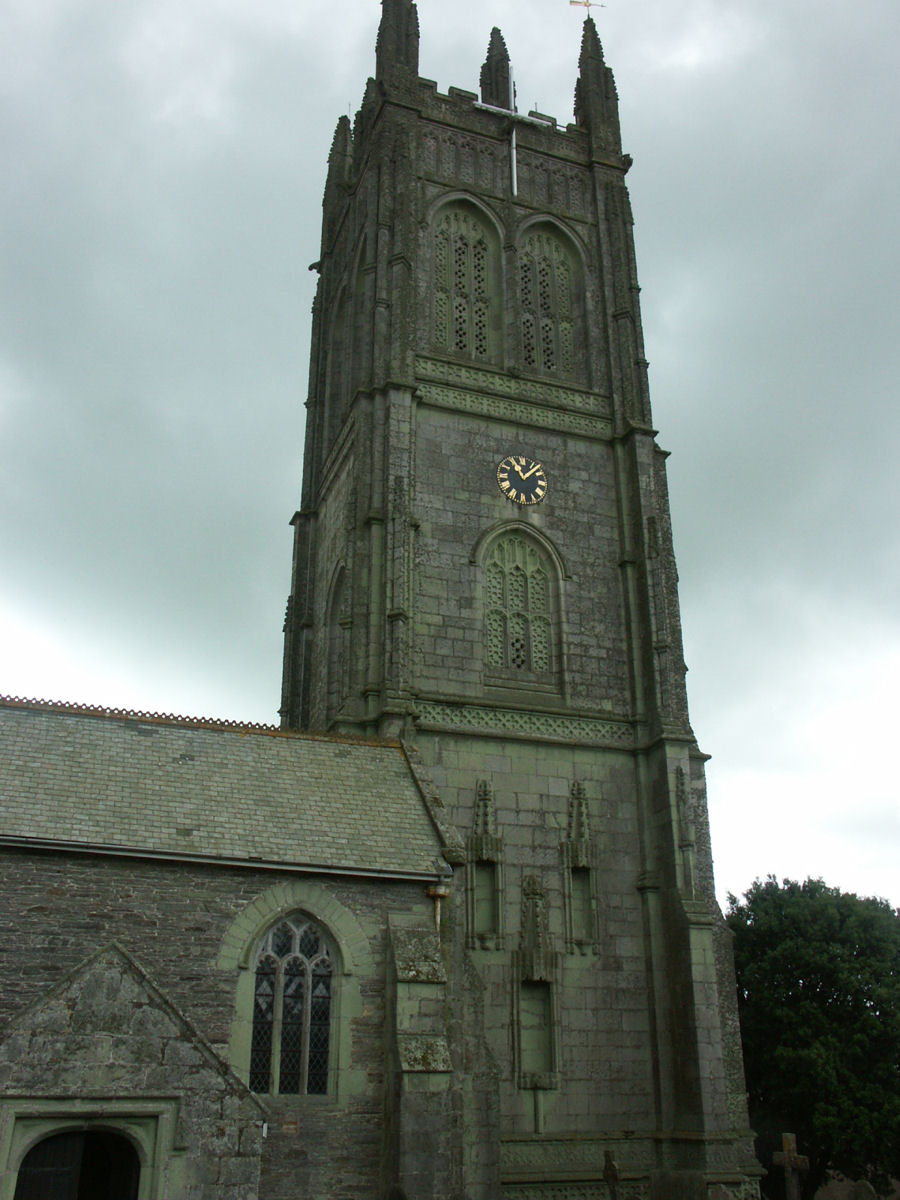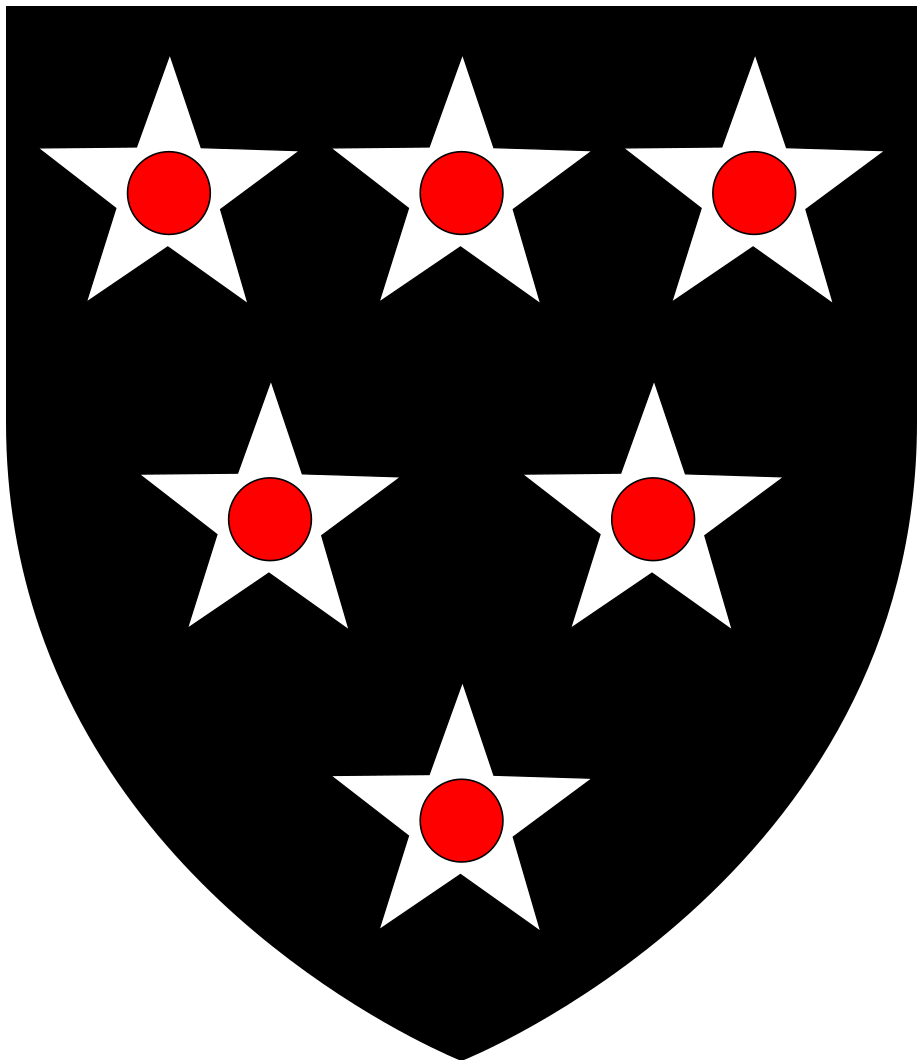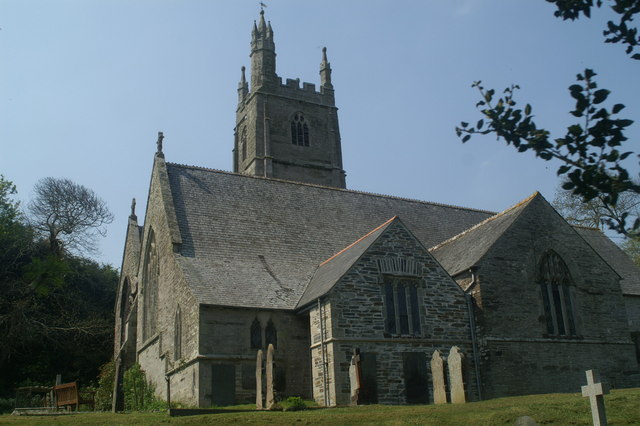|
Richard Edgcumbe (1499–1562)
Sir Richard Edgcumbe (1499 – 1 February 1562) was an English courtier and politician. Family Richard Edgcumbe was the eldest son of Sir Peter (or Piers) Edgcumbe (1477 – 14 August 1539) of Cotehele, Cornwall, and his first wife, Jane Derneford (d. before 1525), daughter and heir of James Derneford of Stonehouse, Devon, and widow of Charles Dynham of Nutwell, Devon. By his father's first marriage, Richard Edgcumbe had two brothers and three sisters. His mother, Jane, died before 1525, and his father married Catherine St John, the daughter of Sir John St John of Bletsoe, and widow of Sir Gruffudd ap Rhys of Carmarthen. Career Edgcumbe and his brother entered Lincoln's Inn on 2 February 1517. Edgcumbe's grandson, Richard Carew, says that he studied at Oxford, but of this there is no other record. He was among the knights created by Edward Seymour, 1st Earl of Hertford, 18 October 1537, and two years later he succeeded to his father's estates. On a portion of the Stoneho ... [...More Info...] [...Related Items...] OR: [Wikipedia] [Google] [Baidu] |
Peter Edgcumbe
Peter (or Piers) Edgcumbe (1536 – 4 January 1608) of Mount Edgcumbe and of Cotehele in the parish of Calstock, both in Cornwall, was an English Member of Parliament. Origins Piers was a traditional first name in his family. He was the eldest son of Sir Richard Edgcumbe (1499–1562), son of Sir Piers Edgcumbe (d.1539) Vivian, Lt.Col. J.L., (Ed.) The Visitations of Cornwall: Comprising the Heralds' Visitations of 1530, 1573 & 1620; with additions by J.L. Vivian, Exeter, 1887, p.14/ref> of West Stonehouse and Cotehele, Cornwall. Career He was elected a Member of Parliament for Totnes (UK Parliament constituency), Totnes in Devon in 1555, appointed Sheriff of Devon for 1565, Sheriff of Cornwall in 1569 and Custos Rotulorum of Cornwall before 1573–1597. He was also a Member of Parliament for Cornwall in the periods 11 January 1563 – 2 January 1567 and 8 May 1572 – 1581, Devon in 1571, Liskeard in 1584–1585 and was then re-elected for Cornwall in 1586, 1589 and 1593. ... [...More Info...] [...Related Items...] OR: [Wikipedia] [Google] [Baidu] |
Cornwall (UK Parliament Constituency)
Cornwall is a former county constituency covering the county of Cornwall, in the South West of England. It was a United Kingdom constituencies, constituency of the House of Commons of England then of the House of Commons of Great Britain from 1707 to 1800 and of the House of Commons of the United Kingdom from 1801 to 1832. It was represented by two Knights of the Shire, elected by the Plurality-at-large voting, bloc vote system. Under the Reform Act 1832, it was divided between the constituencies of East Cornwall (UK Parliament constituency), East Cornwall and West Cornwall (UK Parliament constituency), West Cornwall. Boundaries and franchise The constituency consisted of the whole of the historic counties of England, historic county of Cornwall, the most south-westerly county of England, occupying the part of the South West peninsula to the west of the River Tamar which divides the county from Devon. (Although Cornwall contained a number of parliamentary boroughs, each of which ... [...More Info...] [...Related Items...] OR: [Wikipedia] [Google] [Baidu] |
Lambourn
Lambourn is a village and civil parish in Berkshire, England. It lies just north of the M4 Motorway between Swindon and Newbury, and borders Wiltshire to the west and Oxfordshire to the north. After Newmarket it is the largest centre of racehorse training in England, and is home to a rehabilitation centre for injured jockeys, an equine hospital, and several leading jockeys and trainers. To the north of the village are the prehistoric Seven Barrows and the nearby long barrow. In 2004 the Crow Down Hoard was found close to the village. History The most common explanation for the name of Lambourn refers to the lambs that were once dipped in the local river. Many spellings have been used over the centuries, such as Lamburnan (880), Lamburna (1086), Lamborne (1644) and Lambourne. It was also called Chipping Lambourn because of its popular market. The spelling was fixed as 'Lambourn' in the early 20th century, but even today, towards Soley, three successive signposts at nearby ... [...More Info...] [...Related Items...] OR: [Wikipedia] [Google] [Baidu] |
Probus, Cornwall
Probus ('' Cornish: Lannbrobus'') is a civil parish and village in Cornwall, England, in the United Kingdom. It has the tallest church tower in Cornwall. The tower is high, and richly decorated with carvings. The place name originates from the church's dedication to Saint Probus. The parish population at the 2011 census was 2,299, whereas the ward population taken at the same census was 3,953. History There was a monastery here before the Norman Conquest which continued to exist until the reign of Henry I. King Henry gave the church of Probus to Exeter Cathedral and the clergy of Probus thereafter were a dean and five canons (the deanery was abolished in 1268 and the canonries in 1549). The first vicar was instituted in 1312; the parish had dependent chapelries at Cornelly and Merther. The church was built mainly in the 15th century but the tower was still under construction in 1523. In the church is the brass of John Wulvedon and his wife, 1512. In the early years of the 19t ... [...More Info...] [...Related Items...] OR: [Wikipedia] [Google] [Baidu] |
Cecily Bonville, 7th Baroness Harington
Cecily Bonville, 7th Baroness Harington, 2nd Baroness Bonville (30 June 1460 – 12 May 1529) was an English peer, who was also Marchioness of Dorset by her first marriage to Thomas Grey, 1st Marquess of Dorset, and Countess of Wiltshire by her second marriage to Henry Stafford, 1st Earl of Wiltshire. The Bonvilles were loyal supporters of the House of York during the series of dynastic civil wars that were fought for the English throne, known as the Wars of the Roses (1455–1487). When she was less than a year old, Cecily became the wealthiest heiress in England after her male relatives were slain in battle, fighting against the House of Lancaster. Cecily's life after the death of her first husband in 1501 was marked by an acrimonious dispute with her son and heir, Thomas Grey, 2nd Marquess of Dorset. This was over Cecily's right to remain sole executor of her late husband's estate and to control her own inheritance, both of which Thomas challenged following her second marriage ... [...More Info...] [...Related Items...] OR: [Wikipedia] [Google] [Baidu] |
Thomas Grey, 1st Marquess Of Dorset
Thomas Grey, 1st Marquess of Dorset, 1st Earl of Huntingdon, 7th Baron Ferrers of Groby, (145520 September 1501) was an English nobleman, courtier and the eldest son of Elizabeth Woodville and her first husband Sir John Grey of Groby. Her second marriage to King Edward IV made her Queen of England, thus elevating Grey's status at court and in the realm as the stepson of the King. Through his mother's endeavours, he made two materially advantageous marriages to wealthy heiresses, the King's niece Anne Holland and the King’s cousin, Cecily Bonville, 7th Baroness Harington. By the latter, he had 14 children. Family Thomas Grey was born in 1455 close to the Palace of Westminster, near the City of London. He was the elder son of John Grey (c.1432-1461) of Groby in Leicestershire, by his wife Elizabeth Woodville, who later became queen consort to King Edward IV. Career His mother endeavoured to improve his estates by the conventional methods of their class and time, through hi ... [...More Info...] [...Related Items...] OR: [Wikipedia] [Google] [Baidu] |
St Mawgan
St Mawgan or St Mawgan in Pydar () is a village and civil parishes in England, civil parish in Cornwall, England, United Kingdom. The population of this parish at the 2011 census was 1,307. The village is situated four miles northeast of Newquay, and the parish also includes the hamlet of Mawgan Porth.Ordnance Survey: Landranger map sheet 200 ''Newquay & Bodmin'' The surviving manor house known as Lanherne House is an early 16th-century Listed building, grade I listed building. The nearby Royal Air Force station, RAF St Mawgan, takes its name from the village and is next to Newquay Cornwall Airport. The River Menalhyl runs through St Mawgan village and the valley is known as ''The Vale of Lanherne''. It was the subject of a poem by poet Henry Sewell Stokes. History There is evidence of Bronze Age and Iron Age settlements, though the village history proper is considered to start from the arrival of the Welsh missionary Mawgan, St Mawgan (or Meugan) and his followers in the 6 ... [...More Info...] [...Related Items...] OR: [Wikipedia] [Google] [Baidu] |
John Arundell (1474–1545)
Sir John Arundell (1474–1545) Knight banneret, Knight Banneret, of Lanherne, St Mawgan-in-Pyder, St. Mawgan-in-Pyder, Cornwall, was Receiver-General of the Duchy of Cornwall. Called "the most important man in the county", Sir John's monumental brass in the church at St Columb Major, St. Columb Major in Cornwall was described by Dunkin (1882) as "perhaps the most elaborate and interesting brass to be found in Cornwall". Origins Arundell was the eldest son of Thomas Arundell (1454–1485), Sir Thomas Arundell (1454–1485) KB, by his wife Katharine Dynham, third daughter of John Dinham (1406–1458), John Dynham (1406–1458) and wife Joan Arches, and coheiress to her brother John Dynham, 1st Baron Dynham, John, 1st Baron Dynham. His family's establishment was at Lanherne House, mainly built in the 16th and 17th centuries. The senior branch of the ancient Cornish family of Arundell had been seated at Lanherne since the middle of the 13th century. Career In 1506, under Henry VII ... [...More Info...] [...Related Items...] OR: [Wikipedia] [Google] [Baidu] |
Thomas Cromwell
Thomas Cromwell (; – 28 July 1540) was an English statesman and lawyer who served as List of English chief ministers, chief minister to King Henry VIII from 1534 to 1540, when he was beheaded on orders of the king, who later blamed false charges for the execution. Cromwell was one of the most powerful proponents of the English Reformation. As the king's chief secretary, he instituted new administrative procedures that transformed the workings of government. He helped to engineer an annulment of the King's marriage to Catherine of Aragon so that Henry could lawfully marry Anne Boleyn. Henry failed to obtain the approval of Pope Clement VII for the annulment in 1533, so Parliament endorsed the king's claim to be Supreme Head of the Church of England, giving him the authority to annul his own marriage. Cromwell subsequently charted an Lutheranism, evangelical and reformist course for the Church of England from the unique posts of Vicegerent in Spirituals and Vicar-general (the t ... [...More Info...] [...Related Items...] OR: [Wikipedia] [Google] [Baidu] |
Plymouth Sound
Plymouth Sound, or locally just The Sound, is a deep inlet or sound in the English Channel near Plymouth in England. Description Its southwest and southeast corners are Penlee Point in Cornwall and Wembury Point in Devon, a distance of about 3 nautical miles (6 km). Its northern limit is Plymouth Hoe giving a north–south distance of nearly 3 nautical miles (6 km). The Sound has three water entrances. The marine entrance is from the English Channel to the south, with a deep-water channel to the west of the Plymouth Breakwater. There are two freshwater inlets: one, from the northwest, is from the River Tamar via the Hamoaze and Devonport Dockyard, the largest naval dockyard in western Europe. The other, at northeast, is from the River Plym disgorging into its narrow estuary, Cattewater harbour between Mount Batten and the Royal Citadel. In the centre of the Sound, midway between Bovisand Bay and Cawsand Bay, is Plymouth Breakwater, which creates a harbou ... [...More Info...] [...Related Items...] OR: [Wikipedia] [Google] [Baidu] |
Hundred (county Division)
A hundred is an administrative division that is geographically part of a larger region. It was formerly used in England, Wales, some parts of the United States, Denmark, Sweden, Finland, Norway, and in Cumberland County in the British Colony of New South Wales. It is still used in other places, including in Australia (in South Australia and the Northern Territory). Other terms for the hundred in English and other languages include '' wapentake'', ''herred'' (Danish and Bokmål Norwegian), ''herad'' ( Nynorsk Norwegian), ''härad'' or ''hundare'' (Swedish), ''Harde'' (German), ''hiird'' ( North Frisian), ''kihlakunta'' (Finnish), and '' cantref'' (Welsh). In Ireland, a similar subdivision of counties is referred to as a barony, and a hundred is a subdivision of a particularly large townland (most townlands are not divided into hundreds). Etymology The origin of the division of counties into hundreds is described by the ''Oxford English Dictionary'' (''OED'') as "exceedingly ... [...More Info...] [...Related Items...] OR: [Wikipedia] [Google] [Baidu] |








